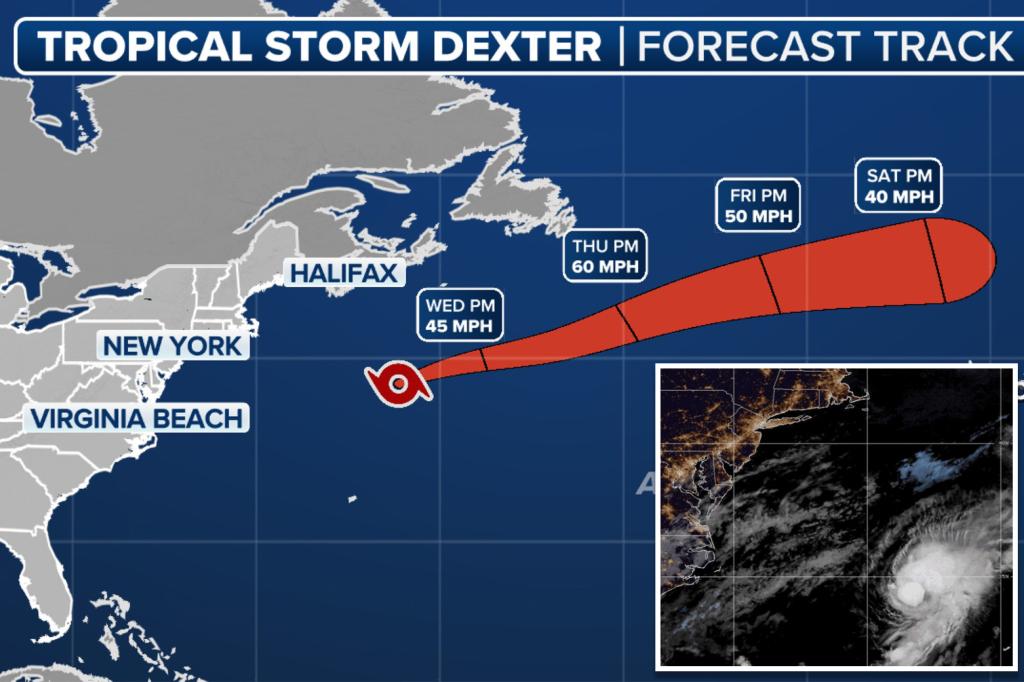Tropical Storm Dexter has started to weaken after forming off the East Coast in the Atlantic Ocean on Sunday night, but forecasters say it could restrengthen in the coming days as it continues to move away from the U.S.
The National Hurricane Center (NHC) said that maximum sustained winds within Tropical Storm Dexter have dropped to about 40 mph with some higher gusts.
A tropical storm is a tropical cyclone that has maximum sustained winds between 39 and 73 mph – an upgrade from a tropical depression.
Tropical Storm Dexter is currently located about 460 miles north of Bermuda and is moving off to the northeast near 13 mph.
The NHC said Dexter is expected to make a gradual turn toward the east-northeast over the next few days.
Tropical Storm Dexter could strengthen a bit over the next few days before becoming a post-tropical cyclone by Wednesday as it encounters increasing wind shear.
“Some re-strengthening is forecast in a couple of days as Dexter becomes an extratropical cyclone,” the NHC said in its latest advisory.
The Atlantic hurricane season runs from June 1 to Nov. 30.
US rip current risk rises as Dexter spins off East Coast
Tropical Storm Dexter may be moving away from the U.S., but impacts from the fast-moving storm will be felt along the coast.
People from New England southward to South Florida have flocked to beaches to catch some rays and enjoy some time in the water, but dangers lurk below the surface.
Rip currents will pose a serious risk to beachgoers all along the East Coast.
Beaches from New York and New Jersey southward to Delaware are seeing a moderate risk on Monday, while a high rip current risk exists for portions of the Delmarva Peninsula, Virginia, North Carolina and South Carolina in the mid-Atlantic.
Moderate rip current risks also exist from Georgia to South Florida.
Rip currents are strong, narrow currents that move away from the shore and out to sea at high speeds.
They can occur at any beach with breaking waves – not just in the ocean.
Read the full article here


